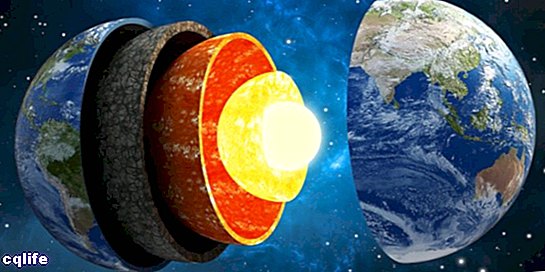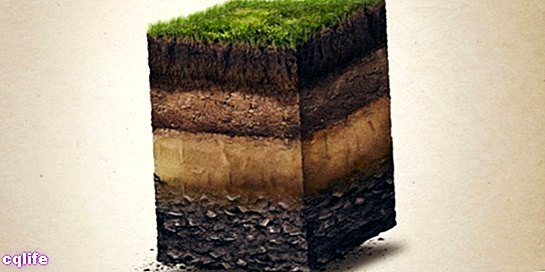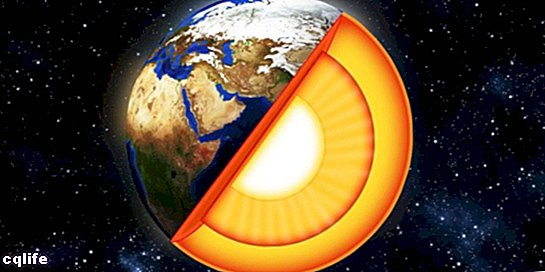We explain what the geosphere is and what its structure is like. Also, how this layer sets are composed and their importance.

What is the geosphere?
In the natural Sciences The set of layers that make up the solid part of the Earth is called the geosphere or geosphere. Next to the hydrosphere (aquatic part), the atmosphere (gaseous part) and the biosphere (set of living beings), make up the parts into which our planet can be analytically divided.
Like other terrestrial (solid surface) planets, the Earth is made up of rocky materials of different nature and that present different dynamics among themselves, many of which date from the first geological periods or were formed during convulsive stages of volcanic activity. Many of the oldest known rocks on the planet date back more than 4.4 billion years.
The study of the geosphere by geologists and other specialists, it is carried out through the experimental review of the soils, especially in places where terrain features reveal strata to the surface that would normally remain hidden.
Similarly, many observations are theoretical or derived from calculus: mass and the volume of the earth are not measurable directly, but they can be measured through other calculable variables, such as gravity, or the reverberation of seismic waves.
Structure and composition of the geosphere

The structure The geosphere is studied from two different perspectives: from the chemical point of view and from the geological point of view.
From the point of view of its chemical composition, the geosphere comprises three layers: crust, mantle and core.
- Cortex (from 0 to 35 km deep). It is the superficial rock stratum on which we live, whose relatively thin thickness contemplates a density 3.0 g / cm3 mean. This includes sea beds and deep depressions. It is mainly made up of mafic rocks (iron and magnesium silicates), felsic rocks (sodium, potassium and aluminum silicates).
- Mantle (35 to 2890 km deep). It is the thickest layer of all, composed of siliceous rocks, with a higher iron content than the crust. As we move into the mantle, the temperatures and the pressures are becoming colossal, achieving a state of semi-solidity in the rock that composes it, capable of allowing the movement of the tectonic plates and be responsible for tremors and earthquakes. Due to the Pressure, the upper part of the mantle is less viscous and more mobile than the lower part, varying between 1021 and 1024 Pa.s in magnitude.
- Core (from 2,890 to 6,371 km deep). The innermost portion of the planet, where the densest materials are found (Earth is the densest planet in the world). Solar system). The core is divided in turn into two strata: outer core (2890 to 5150 km deep) and inner core (5150 to 6371 km deep), and is composed mostly of iron (80%) and nickel , while elements such as lead and uranium are in short supply.
Instead, from a geological point of view, the geosphere is divided into:
- Lithosphere (from 0 to 100 km deep). This is the solid portion of the geosphere, where the solid rocks are and that corresponds to the crust and the surface portion of the mantle. It is found fragmented into a series of tectonic or lithospheric plates, on whose edges seismic and volcanic phenomena take place and the orogenesis.
- Asthenosphere (100 to 400 km deep). Composed of ductile materials in a semi-solid to solid state, corresponding to the earth's mantle. The very slow movements that make up continental drift take place there; but as it gets closer to the nucleus, it loses its properties and becomes rigid like the lower mantle.
- Core (from 2,890 to 6,371 km deep). Located at the end of the lower mantle, the core or endosphere is the terrestrial geological portion that comprises the largest amount of mass on the planet (60% of the total). Its radius is greater than that of the planet Mars (about 3500 km) and has enormous pressure and temperatures above 6700 ° C. Composed mainly of iron and nickel, it is divided into an outer core of a liquid nature and an inner core of a solid nature.
Importance of the geosphere

The geosphere is the oldest portion of our planet and where all its secrets are contained. Scholars of the geology try to discover the various processes involved in their formation, which also show light on the formation of the rest of the stars of the Solar System and, therefore, of the origin of the universe. The same occurs with seismology, a science that tries to understand the nature of geological and tectonic movements to prevent eventual earthquakes and prevent them from being so destructive to the humanity.
On the other hand, the study of the geosphere goes hand in hand with the understanding of the materials that we can find on our planet, which has important repercussions on the various industries, engineering and International Trade, among other vital areas.
